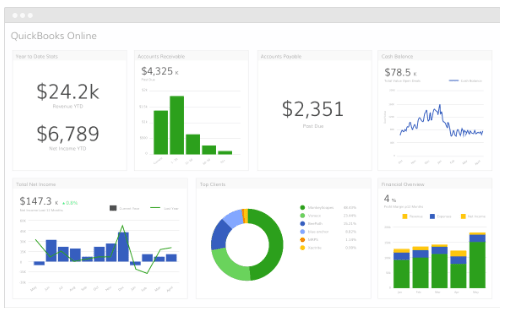Content
- How to Calculate the Incremental Margin
- Definition of Incremental Costs
- How to Calculate Incremental Cost
- Electricity and power cost estimates
- Incremental Cost VS Incremental Revenue
- Options for possible changes to the blood donation service: health economics modelling.
- Incremental CostThe additional costs of producing an extra unit of product

For cyclical industries – e.g. manufacturing, industrials – strong margins are crucial because it reflects that a company can capitalize at the top of the cycle and manage its margins in a down cycle, where demand is reduced and margins are pressured. By comparing the profit metric to revenue, one can estimate a company’s profitability and identify its cost structure, i.e. where most of the company’s spending is allocated. Not the total capital employed, in order to obtain a true picture. Ultimately, for convenience, all the capital can be allocated to this duty, but the financial mechanics should be appreciated in the costing presentation by noting that standby security is then ‘free’.
- To be considered, the comparison of different technology choices and design approaches is simplified by focusing on the choices that provide the lowest cost energy savings.
- Incremental costs help to determine the profit maximization point for a company or when marginal costs equal marginal revenues.
- The fixed costs per unit are $20 when a company produces 20,000 units of product.
- It is estimated that assembling a gym would take additional labor of $100 and overhead of $25, and once assembled, the gym could be sold for $1,500.
It is calculated by dividing the contribution margin by the machine hours per set. This calculation shows the standard set has the highest contribution margin when the capacity limitation is considered. The reason there’s a lower incremental cost per unit is due to certain costs, such as fixed costs remaining constant.
How to Calculate the Incremental Margin
Wages / Salaries – Cost of additional wages/salaries to pay to produce one additional product. Raw Materials such as Inventory – Cost to buy one additional raw material. Stay updated on the latest products and services anytime, anywhere. The JD company is considering increasing its production of goods.
- Economies of scale occurs when increasing production leads to lower costs since the costs are spread out over a larger number of goods being produced.
- However, the operating margin of our company, contrary to the gross margin and EBITDA margin, declined from 12.0% to 11.4%.
- By comparing the profit metric to revenue, one can estimate a company’s profitability and identify its cost structure, i.e. where most of the company’s spending is allocated.
- At 5% cofiring level, it is cheaper to cofire regular pellets than raw biomass.
- The ideal scenario is when the increase in the production level produces a profit.
When you increase to two widgets, the employee works more efficiently due to repetition. So instead of taking one hour to make two products, your employee can do it in 45 minutes. The ICC is used to evaluate whether a company should invest in a project by comparing the project’s required return to the ICC. FundsNet requires Contributors, Writers and Authors to https://www.bookstime.com/ use Primary Sources to source and cite their work. These Sources include White Papers, Government Information & Data, Original Reporting and Interviews from Industry Experts. Reputable Publishers are also sourced and cited where appropriate. Learn more about the standards we follow in producing Accurate, Unbiased and Researched Content in our editorial policy.
Definition of Incremental Costs
Costs that go away if the segment no longer operates are called avoidable costs, and those that remain even if the segment is discontinued are called unavoidable costs. Since we have all the necessary inputs to incremental cost calculate the incremental margins, we’ll apply the formula for each profit metric. Most profit margin metrics are a ratio between a profitability metric to revenue, i.e. the “top line” of the income statement.
What does incremental mean in sales?
Incremental sales refers to the value of products or services sold during a tracked period of time that goes over and above what your business might normally sell.
It is essential for companies to calculate the average cost per unit of production in order to set prices at a level that covers costs and allows for profit. When a company sells more than one product and has limited capacity for production of its products, it should optimize its production to produce the highest net income possible. To maximize profit, a calculation of the contribution margin for each product is required. In addition, the amount of the limited capacity each product uses must be determined. For example, if Golfers Paradise produces two different sets of golf clubs, it is limited by its machine capacity of 4,200 hours per month.
How to Calculate Incremental Cost
For example, to evaluate a modified VAD, a clinical study may just consider patients in one hospital for a year and may exclude the sickest patients because of ethical concerns. There is generally, therefore, a mismatch between the published evidence and the evidence we need to judge cost-effectiveness. By this method, any one value of C can be estimated from the costs of two correspondingly successive thicknesses, with the understanding that the value applies to neither one, but may relate to a thickness about midway between them. Within the context of this method of economic thickness calculation, therefore, the value of C should be obtained from a measurement or deduction of the slope of the curve for the plot of insulation cost against insulation thickness. However, in practice, such a graph is unlikely to exhibit a curve and the alternative approach is commonly adopted in these circumstances. Imagine that you are the owner of a small business that manufactures and sells widgets. You are considering expanding your business by opening a second factory.
